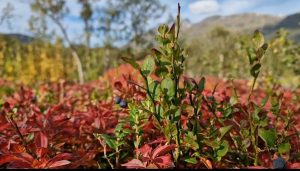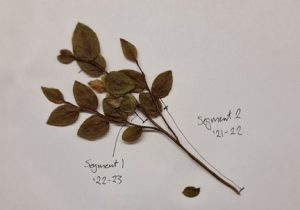Would you like to learn more about how plants strategically allocate their carbon resources across climatic gradients?
Project description
In the DURIN project, we’re investigating the underappreciated roles of dwarf shrubs in responding to and influencing global climate change. Dwarf-shrubs (Ericaceae) are a dominant plant type across boreal, alpine and arctic ecosystems, where they play an important role in biodiversity and ecosystem functioning. However, they can be quite sensitive to climate changes and variability.
One key element of understanding plant-climate relationships is looking into how plants are able to allocate carbon gained via photosynthesis into different growth strategies, and how these patterns may change depending on the growing season conditions each year.
To better understand this, we’re looking into how dwarf-shrubs allocate their carbon resources to either leaves (for more photosynthesis) or stems (structural support) across ~100 sites representing a temperature and precipitation gradient throughout Norway. We are interested in knowing how these carbon allocation strategies might differ between evergreen and deciduous plants (long-lived and expensive leaves vs short-lived and cheap), and also between shrubs living in open or forested landscapes where microclimate conditions and competition from other plant-types might play an important role, e.g. competition for light under the forest canopy meaning plants may need to grow taller.
The student will work within the lab to process Vaccinium plant samples that were collected throughout Norway in 2024. The student will learn how to identify yearly growth segments for different Vaccinium vitis-idaea (evergreen), and Vaccinium myrtillus (deciduous), and process the samples separating leaf and stem tissue, before weighing the dried samples to compare the carbon content.
Starting date/period: The project is lab based and can be worked on between May 26th – July 31st with a preference for starting earlier within that timeframe.
The project involves: labwork
Experience
Through participating in this project, you will learn about carbon allocation processes and dwarf-shrub morphological characteristics, as well as developing lab-skills.
Involvement: up to 40h of lab work
Interested by this project? Need more info? Contact Sonya Geange (sonya.geange@uib.no) and Kristine Birkeli (Kristine.Birkeli@uib.no)
Project number: 049


